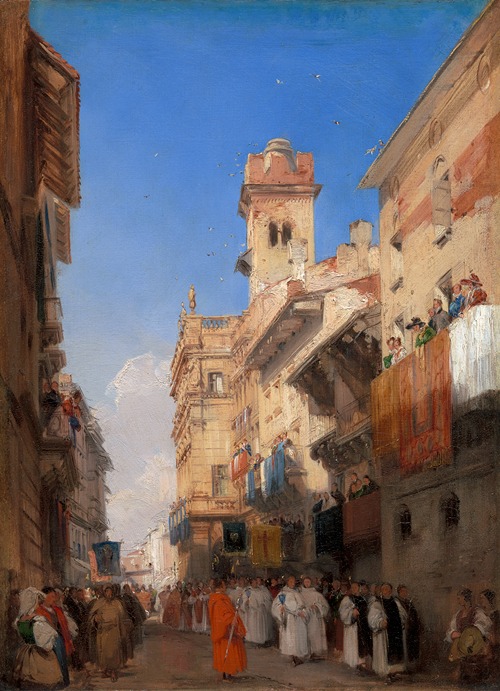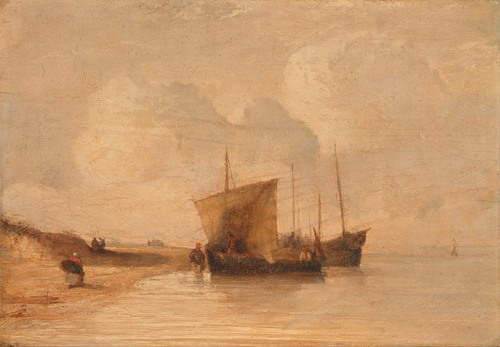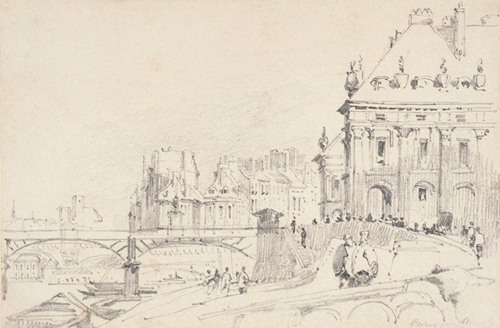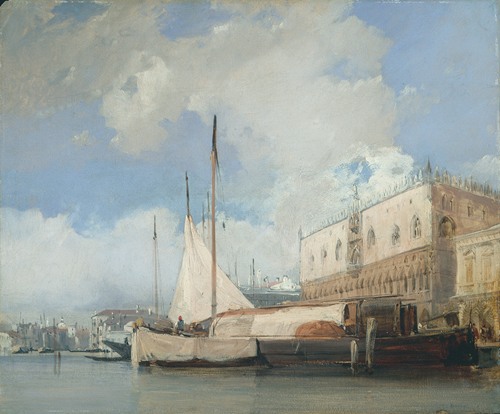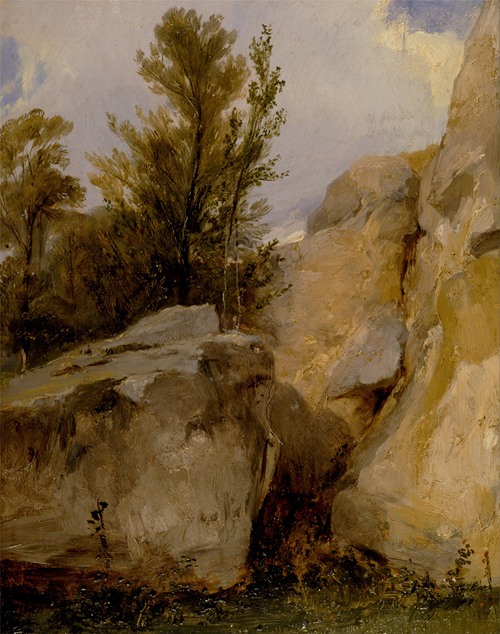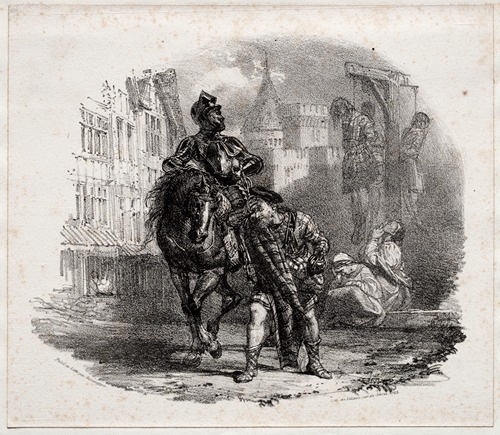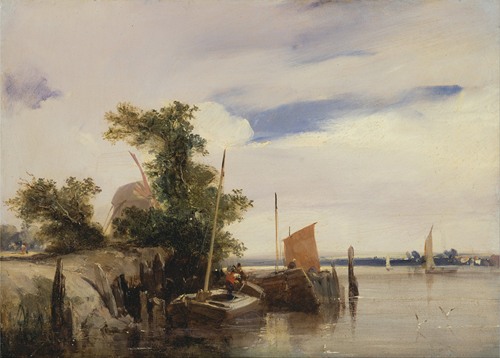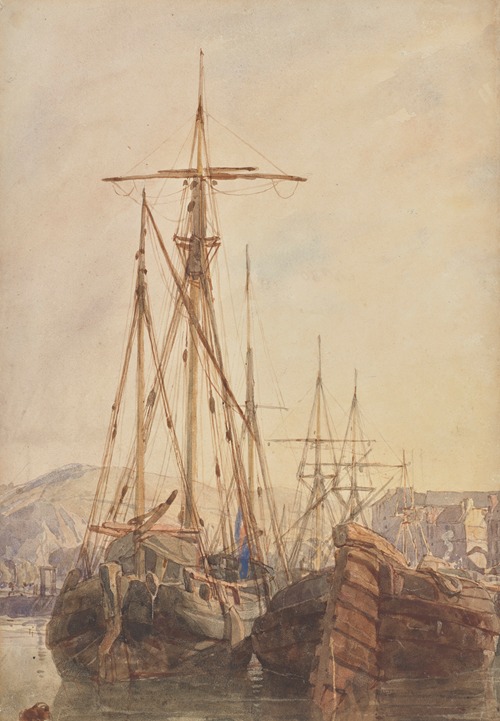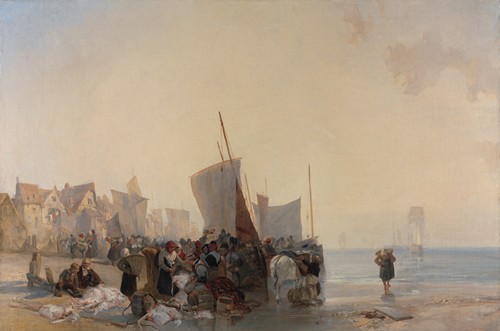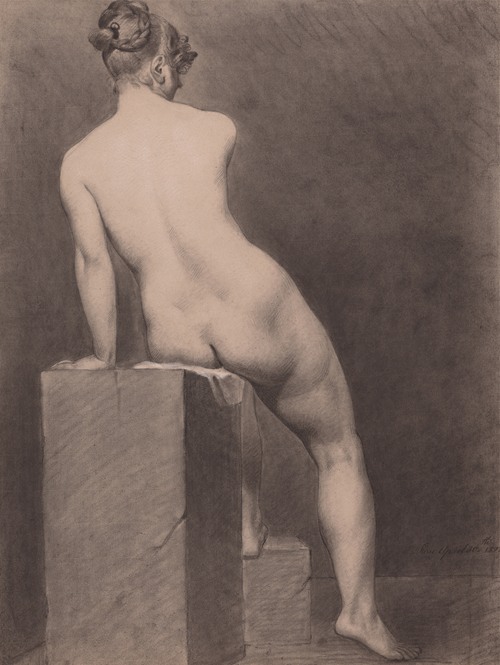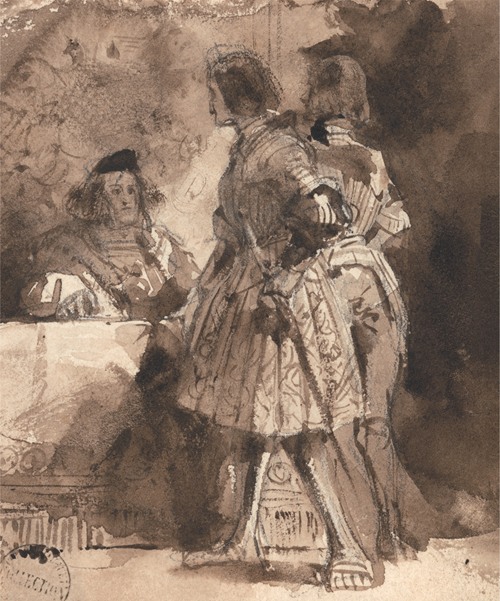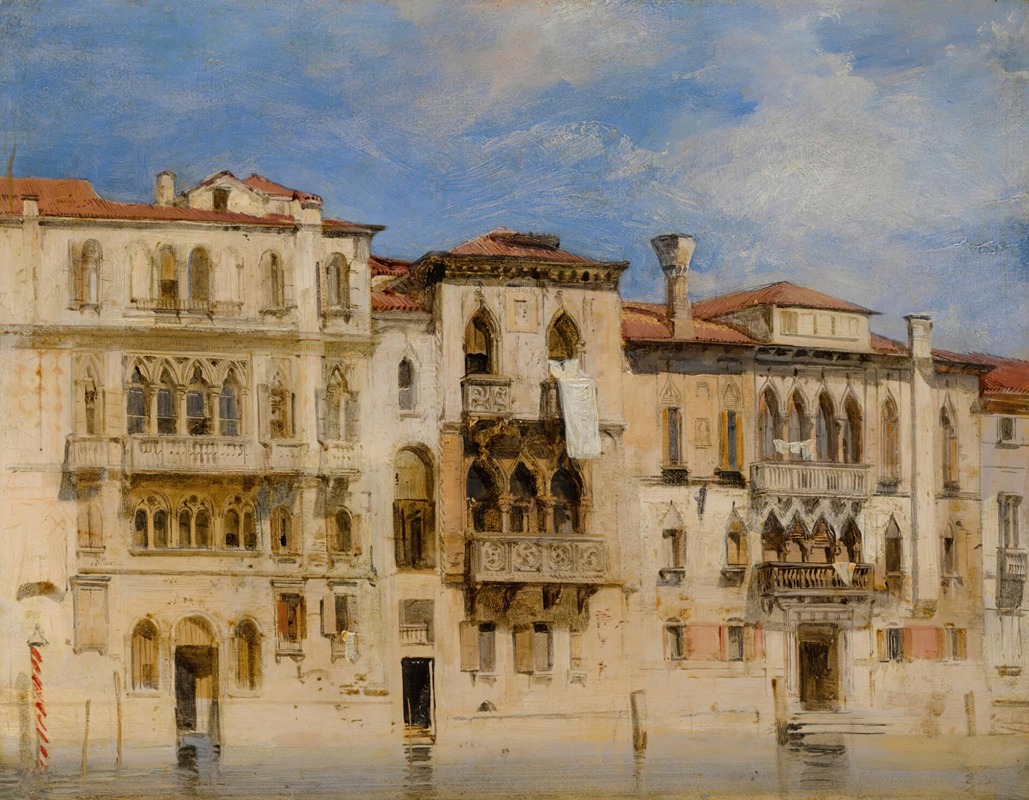
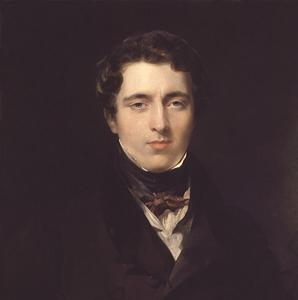
Richard Parkes Bonington was an English Romantic landscape painter, who moved to France at the age of 14 and can also be considered as a French artist, and an intermediary bringing aspects of English style to France. Becoming, after his early death, one of the most influential British artists of his time, the facility of his style was inspired by the old masters, yet was entirely modern in its application. His landscapes were mostly of coastal scenes, with a low horizon and large sky, showing a brilliant handling of light and atmosphere. He also painted small historical cabinet paintings in a freely-handled version of the troubadour style.
Richard Parkes Bonington was born in the town of Arnold, four miles from Nottingham. His father also known as Richard was successively a gaoler, a drawing master and lace-maker, and his mother a teacher. Bonington learned watercolour painting from his father and exhibited paintings at the Liverpool Academy at the age of eleven.
In 1817, Bonington's family moved to Calais, France, where his father had set up a lace factory. At this time, Bonington started taking lessons from the painter François Louis Thomas Francia, who, having recently returned from England, where he had been deeply influenced by the work of Thomas Girtin, taught him the English watercolour technique. In 1818, the Bonington family moved to Paris to open a lace shop. There he met and became friends with Eugène Delacroix. He worked for a time producing copies of Dutch and Flemish landscapes in the Louvre. In 1820, he started attending the École des Beaux-Arts in Paris, where he studied under Antoine-Jean, Baron Gros.
It was around this time that Bonington started going on sketching tours in the suburbs of Paris and the surrounding countryside. His first paintings were exhibited at the Paris Salon in 1822. He also began to work in oils and lithography, illustrating Baron Taylor's Voyages pittoresques dans l'ancienne France and his own architectural series Restes et Fragmens. In 1824, he won a gold medal at the Paris Salon along with John Constable and Anthony Vandyke Copley Fielding, and spent most of the year painting coastal views in Dunkirk.
In 1825 he met Delacroix on a visit with Alexandre-Marie Colin to London, and they sketched together there, and shared a studio for some months in Paris on their return; Delacroix influenced him in turning to historical painting. He also developed a technique mixing watercolour with gouache and gum, achieving an effect close to oil painting. In 1826 he visited northern Italy, staying in Venice for a month, and London again in 1827–8. In late 1828 his tuberculosis worsened and his parents sent him back to London for treatment. Bonington died of tuberculosis on 23 September 1828 at 29 Tottenham Street in London, aged 25. He was buried in the graveyard of St James's Chapel Pentonville and in 1837 his remains were transferred to Kensal Green Cemetery to be re-interred with his parents.
